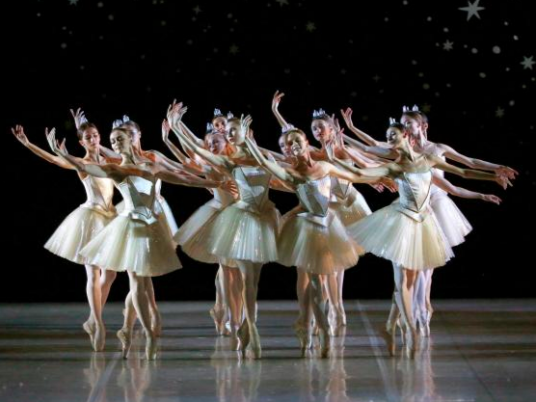Located in a neo-Islamic architectural masterpiece dubbed al-Saraya al-Koubra (The Great Palace) on the grounds of the Cairo Opera House, the Museum of Modern Egyptian Art provides a refuge from reality. The beautiful building is a calm space amid the chaos of the city, and the vast collection a telling perspective on the country's relatively recent history.
The Great Palace, which was built in 1936 and earmarked as a home for cultural and artistic events by Kind Fouad together with French and British royalty, received a multi-million pound makeover towards the end of the twentieth century. By 1991 it was ready to act as the headquarters for modern Egyptian artwork.
Countless Egyptian artists contribute to the dynamic national art scene today. The result, as seen at the Museum of Modern Egyptian Art, mirrors the multi-faceted, constantly changing country. In this museum, Egypt is seen through the talent of its artists, and the way they interpret their near and distant environments.
For Egyptians, a stroll through the large museum stirs up memories of a country’s past and present, revealing a rich and dynamic culture. For curious foreigners, wandering through the museum will answer questions about Egypt’s evolving culture in a way that the city's other museums and historic sites do not; the Museum of Modern Egyptian Art is a book of colorful, wide open stories, ready for interpretation.
In addition to telling a lot about modern Egyptian history and illustrating local trends in art, the work in the museum reflects worldwide trends. Adel al-Siwi’s expressionist masterpieces, Zeinab al-Segeny’s tales of women and children, and Salah Taher’s abstract paintings all fit into the (literal and figurative) maze of artwork on display.
Efforts to find a balance between the works of past generations as well as more recent movements are reflected in the museum’s multi-leveled composition. The vast main hall, paneled in marble, exhibits the contemporary art movement, from 1975-present.
Of the most alluring paintings in the principal lobby is Ali Nabil Wahba’s "Loss," painted in 1987. In it, a woman lies amid a sea of wild black, green and white brushstrokes, her head tilted back, seemingly in agony. Wahba’s heavy brushstrokes–loud and hyperbolic–are reminiscent of the expressionist movement.
Another of the hall's expressionist paintings is Adel al-Siwi’s dark blue, black and violet portrait, the figure standing in stark contrast to the flat blood-red background. Al-Siwi was born during the 1952 revolution and, throughout his career, undertook abstract art, symbolism and expressionism mostly on a very large, imposing scale.
Mohamed Abla’s "Crowd" is also immensely intriguing. Produced in 1989, the oil painting is composed of frantic dots and scribbles. Scattered across the canvas, these marks ultimately create a scene of chaotic Cairo. Yet another artist depicting contemporary Egyptian culture is Omar al-Nagdi, whose work presents a fauvist-style interpretation of crowded city life.
The first and second floors showcase pieces ordered chronologically by artist's birth date. Works of twentieth century Egyptian art pioneers are exhibited in dedicated windows. The first floor is devoted to artists born in the late 19th century up to 1931. The second floor shows paintings produced by artists born between 1932 through the youngest generation.
On the first floor, Hosny al-Bannany’s "Watermelon Market" is succinct in subject matter and spectacular in effect. Despite being born in Cairo in 1912, al-Bannany was intrigued by the Egyptian countryside, capturing its hues and serenity in strong, thick colors. His paintings manage to incorporate motion, his use of detail impeccable yet vivacious.
As the twentieth century arrived, and with it freedom from occupation, Egyptians were left eager for liberty after centuries of foreign interference. Egyptians called for a modern nation, and Egyptian artists expressed their similar wants through modern art. Intellectuals, writers, poets and visual artists used the arts as a way to express a collective national identity. Modern Egyptian artists strove to create authentically Egyptian artwork, unfettered by foreign cultural cues, reviving Egyptian classical art. The art scene was simultaneously impacted by new forms, including surrealism and cubism.
In 1939, a group of Egyptian surrealists established the Art and Freedom Group to endorse freedom of expression and an art scene that blends global concerns with local heritage. Later, in the 1940s, prominent art scholar Husayn Yusuf Amin endorsed the notion that art could shape national identity, encouraging his students to form groups dubbed the “rejectionists” to explore the daily realities of poverty and oppression. Later, in 1946, the Contemporary Art Group was founded, drawing on folk symbolism and popular colloquialisms, and interpreting their findings in abstract expressionism using painting, collage, sculpture and other media.
Following the 1952 revolution, artist groups split up and lost government support. Many avant-garde artists traveled to the West, where experimental and unconventional art was supported, and brought back foreign styles and techniques. The Youth Salon was established in the late 1980s to sustain emerging artists, however, many continued to seek foreign recognition. Towards the end of the 20th century, artists focused on specific social and political environmental factors, as well as the global community.
Among the artists represented in the first floor windows are Ahmad Sabry, Mohamed Nagui, Mahmoud Said Ragheb Ayyad, Mohamed Hassan, Youssef Kamel, Ahmad Lotfy, Aly al-Ahwany and George Sabbagh.
Up the stairs is the "landmark artists in the Egyptian modern art movement." This work, beginning in the 1930s, includes pieces by Hamdy Khamees, Effat Nagi, Samir Rafie, Hamed Nada, Taheya Halim, Youssef Sida, Gazibeyya Sirry, and Abdel-Hadi al-Gazzar.
Throughout its modern history, Egypt has provided ample subject matter for its artists. The collection on display at the Museum of Modern Egyptian Art is a fascinating lens through which to view the complicated timeline of modern Egypt.



